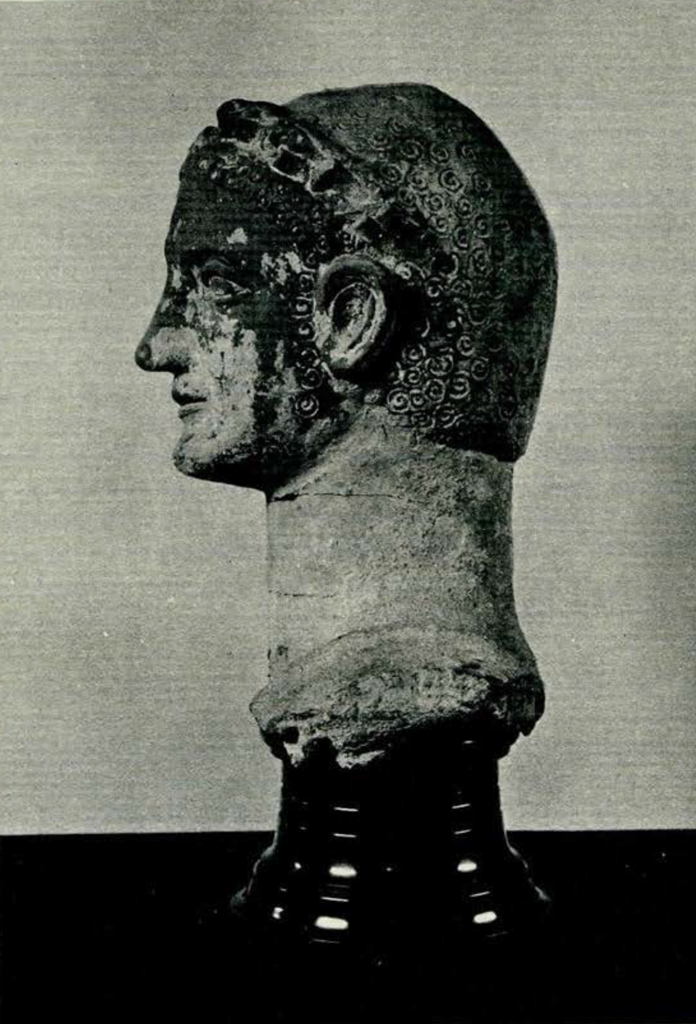THE Museum has recently acquired a terracotta head slightly under life-size, of unknown provenance [Plate XII]. The massive neck and the wreath encircling the forehead imply an heroic type, probably that of a victorious athlete or warrior.

Museum Object Number: 34-23-1
Image Number: 3504
The modelling is not entirely proficient; eyelids are thick and fleshy and the upper lid does not overlap the under at the outer corner. Ears are placed too high and too far forward, and are not equi-distant from the nose. The head is conceived and modelled from a strictly frontal view; just above the nape of the neck it is pared roughly into shape, and on the crown of the head is a circular air vent which would be concealed by the wreath from a spectator who stood in front and at a slightly lower level. The mouth is slightly smiling after the manner of archaic Greek art. Both hair and beard are rendered by stamped spirals which seem to imitate the corkscrew curls of Greek art of the early fifth century B. C. The delineation of the beard suggests the pictures of vase-painters of 490-470 B. c.-the Kleophrades painter, for example-or the statue of the Delphi Charioteer, which was dedicated, probably, in 477 B. C.
Thus, by the aid of stylistic changes in Greek sculpture, an approximate date is obtained for the head, yet the head is not Greek. It lacks both the sobriety and the power of Greek sculpture and the material itself proclaims another source, for in Central Italy from the eighth century B. C. down to the days of the della Robbias, terracotta was the favorite material for sculpture. By many scholars the head would be called Etruscan, but as the evidence accumulates for a competent school of Italic sculpture, independent of Etruscan influence, the term Italic seems safer. The head makes a welcome addition to the Museum’s series of Italic sculptures which reflect changes in art which came as the races of the Italian peninsula shifted and mingled.
E. H. D.

